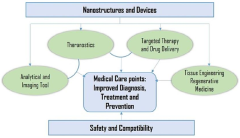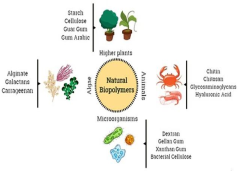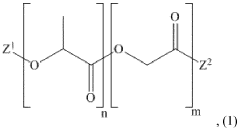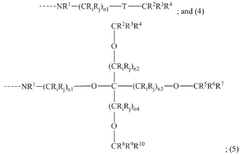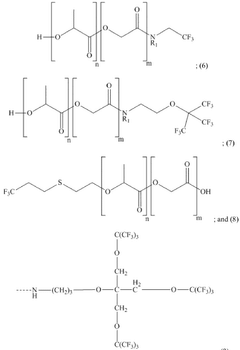Hydroxyethylcellulose as a Carrier for Theranostic Nanoparticles
JUL 31, 20259 MIN READ
Generate Your Research Report Instantly with AI Agent
Patsnap Eureka helps you evaluate technical feasibility & market potential.
HEC Nanocarrier Background and Objectives
Hydroxyethylcellulose (HEC) has emerged as a promising carrier for theranostic nanoparticles, marking a significant advancement in the field of nanomedicine. This natural polymer, derived from cellulose, has garnered attention due to its biocompatibility, biodegradability, and versatile chemical properties. The evolution of HEC as a nanocarrier is rooted in the broader context of nanomedicine development, which has seen rapid growth over the past two decades.
The primary objective of researching HEC as a carrier for theranostic nanoparticles is to develop a multifunctional platform that can simultaneously diagnose and treat diseases at the molecular level. This dual-purpose approach aims to revolutionize personalized medicine by providing real-time monitoring of drug delivery and therapeutic efficacy. The integration of diagnostic and therapeutic capabilities within a single nanoparticle system offers the potential for more precise and effective treatments, particularly in complex diseases such as cancer.
HEC's unique properties make it an ideal candidate for this application. Its hydrophilic nature allows for excellent water solubility and stability in physiological conditions, while its abundant hydroxyl groups provide ample opportunities for chemical modifications. These characteristics enable the attachment of various functional moieties, including imaging agents, targeting ligands, and therapeutic compounds, to create tailored theranostic nanoparticles.
The technological trajectory of HEC nanocarriers has been shaped by advancements in polymer chemistry, nanotechnology, and biomedical imaging. Early research focused on understanding the fundamental properties of HEC and its behavior in nanoparticle formulations. Subsequent developments have explored various synthesis methods, surface modifications, and encapsulation techniques to optimize the performance of HEC-based theranostic nanoparticles.
A key trend in this field is the pursuit of stimuli-responsive HEC nanocarriers that can release their payload in response to specific environmental cues, such as pH, temperature, or enzymatic activity. This smart delivery approach aims to enhance the specificity and efficacy of treatments while minimizing side effects. Another important direction is the development of multimodal imaging capabilities, combining different imaging modalities like magnetic resonance imaging (MRI), optical imaging, and computed tomography (CT) to provide comprehensive diagnostic information.
The overarching goal of this research is to translate HEC-based theranostic nanoparticles from laboratory concepts to clinically viable solutions. This involves addressing challenges related to scalability, reproducibility, and long-term stability of the nanoparticle formulations. Additionally, researchers aim to demonstrate the safety and efficacy of these nanocarriers in preclinical and clinical studies, paving the way for their eventual approval and integration into medical practice.
The primary objective of researching HEC as a carrier for theranostic nanoparticles is to develop a multifunctional platform that can simultaneously diagnose and treat diseases at the molecular level. This dual-purpose approach aims to revolutionize personalized medicine by providing real-time monitoring of drug delivery and therapeutic efficacy. The integration of diagnostic and therapeutic capabilities within a single nanoparticle system offers the potential for more precise and effective treatments, particularly in complex diseases such as cancer.
HEC's unique properties make it an ideal candidate for this application. Its hydrophilic nature allows for excellent water solubility and stability in physiological conditions, while its abundant hydroxyl groups provide ample opportunities for chemical modifications. These characteristics enable the attachment of various functional moieties, including imaging agents, targeting ligands, and therapeutic compounds, to create tailored theranostic nanoparticles.
The technological trajectory of HEC nanocarriers has been shaped by advancements in polymer chemistry, nanotechnology, and biomedical imaging. Early research focused on understanding the fundamental properties of HEC and its behavior in nanoparticle formulations. Subsequent developments have explored various synthesis methods, surface modifications, and encapsulation techniques to optimize the performance of HEC-based theranostic nanoparticles.
A key trend in this field is the pursuit of stimuli-responsive HEC nanocarriers that can release their payload in response to specific environmental cues, such as pH, temperature, or enzymatic activity. This smart delivery approach aims to enhance the specificity and efficacy of treatments while minimizing side effects. Another important direction is the development of multimodal imaging capabilities, combining different imaging modalities like magnetic resonance imaging (MRI), optical imaging, and computed tomography (CT) to provide comprehensive diagnostic information.
The overarching goal of this research is to translate HEC-based theranostic nanoparticles from laboratory concepts to clinically viable solutions. This involves addressing challenges related to scalability, reproducibility, and long-term stability of the nanoparticle formulations. Additionally, researchers aim to demonstrate the safety and efficacy of these nanocarriers in preclinical and clinical studies, paving the way for their eventual approval and integration into medical practice.
Market Analysis for Theranostic Nanoparticles
The market for theranostic nanoparticles is experiencing significant growth, driven by the increasing demand for personalized medicine and targeted drug delivery systems. This innovative technology combines diagnostic and therapeutic capabilities in a single platform, offering immense potential for improving patient outcomes and reducing healthcare costs.
The global theranostic nanoparticles market is expected to expand rapidly in the coming years, with a compound annual growth rate (CAGR) surpassing that of traditional pharmaceutical products. This growth is fueled by the rising prevalence of chronic diseases, such as cancer and cardiovascular disorders, which require more precise and effective treatment approaches.
One of the key factors driving market demand is the ability of theranostic nanoparticles to enhance drug efficacy while minimizing side effects. This is particularly crucial in oncology, where targeted therapies are becoming increasingly important. The market for cancer-specific theranostic nanoparticles is projected to hold a significant share of the overall market, as these nanoparticles offer improved tumor targeting and real-time monitoring of treatment response.
The pharmaceutical and biotechnology industries are major contributors to the theranostic nanoparticles market, with substantial investments in research and development. Academic institutions and research centers are also playing a crucial role in advancing the technology and exploring new applications.
Geographically, North America currently dominates the theranostic nanoparticles market, owing to its advanced healthcare infrastructure and high adoption rate of innovative medical technologies. However, the Asia-Pacific region is expected to witness the fastest growth in the coming years, driven by increasing healthcare expenditure, growing awareness of personalized medicine, and improving research capabilities in countries like China and India.
The market for theranostic nanoparticles faces some challenges, including regulatory hurdles and concerns about long-term safety. However, ongoing clinical trials and collaborations between industry and academia are addressing these issues and paving the way for wider adoption of the technology.
In the context of hydroxyethylcellulose (HEC) as a carrier for theranostic nanoparticles, there is growing interest in biodegradable and biocompatible materials. HEC's properties make it an attractive option for developing safe and effective nanocarrier systems, potentially opening up new market opportunities and applications in drug delivery and imaging.
As the field of nanomedicine continues to evolve, the market for theranostic nanoparticles is expected to diversify, with new materials and formulations entering the pipeline. This presents significant opportunities for companies and researchers working on innovative carrier systems like HEC-based nanoparticles, which could address unmet needs in targeted therapy and diagnostic imaging.
The global theranostic nanoparticles market is expected to expand rapidly in the coming years, with a compound annual growth rate (CAGR) surpassing that of traditional pharmaceutical products. This growth is fueled by the rising prevalence of chronic diseases, such as cancer and cardiovascular disorders, which require more precise and effective treatment approaches.
One of the key factors driving market demand is the ability of theranostic nanoparticles to enhance drug efficacy while minimizing side effects. This is particularly crucial in oncology, where targeted therapies are becoming increasingly important. The market for cancer-specific theranostic nanoparticles is projected to hold a significant share of the overall market, as these nanoparticles offer improved tumor targeting and real-time monitoring of treatment response.
The pharmaceutical and biotechnology industries are major contributors to the theranostic nanoparticles market, with substantial investments in research and development. Academic institutions and research centers are also playing a crucial role in advancing the technology and exploring new applications.
Geographically, North America currently dominates the theranostic nanoparticles market, owing to its advanced healthcare infrastructure and high adoption rate of innovative medical technologies. However, the Asia-Pacific region is expected to witness the fastest growth in the coming years, driven by increasing healthcare expenditure, growing awareness of personalized medicine, and improving research capabilities in countries like China and India.
The market for theranostic nanoparticles faces some challenges, including regulatory hurdles and concerns about long-term safety. However, ongoing clinical trials and collaborations between industry and academia are addressing these issues and paving the way for wider adoption of the technology.
In the context of hydroxyethylcellulose (HEC) as a carrier for theranostic nanoparticles, there is growing interest in biodegradable and biocompatible materials. HEC's properties make it an attractive option for developing safe and effective nanocarrier systems, potentially opening up new market opportunities and applications in drug delivery and imaging.
As the field of nanomedicine continues to evolve, the market for theranostic nanoparticles is expected to diversify, with new materials and formulations entering the pipeline. This presents significant opportunities for companies and researchers working on innovative carrier systems like HEC-based nanoparticles, which could address unmet needs in targeted therapy and diagnostic imaging.
HEC Nanocarrier Development Status
Hydroxyethylcellulose (HEC) has emerged as a promising carrier for theranostic nanoparticles, attracting significant attention in the field of nanomedicine. The development status of HEC nanocarriers has seen substantial progress in recent years, with researchers exploring its potential for various biomedical applications.
HEC, a cellulose derivative, possesses unique properties that make it an ideal candidate for nanocarrier development. Its biocompatibility, biodegradability, and ability to form stable nanoparticles have been extensively studied. The current status of HEC nanocarrier development encompasses several key areas of research and application.
One of the primary focuses has been on the optimization of HEC nanoparticle synthesis methods. Researchers have developed various techniques, including ionic gelation, emulsion-solvent evaporation, and nanoprecipitation, to produce HEC nanoparticles with controlled size, shape, and surface properties. These advancements have led to the creation of nanocarriers with enhanced stability and improved drug loading capacity.
The functionalization of HEC nanocarriers has been another critical area of development. Scientists have successfully modified the surface of HEC nanoparticles with targeting ligands, such as antibodies, peptides, and small molecules, to improve their specificity and cellular uptake. This targeted approach has shown promising results in enhancing the therapeutic efficacy of encapsulated drugs while minimizing off-target effects.
In the realm of theranostics, HEC nanocarriers have demonstrated significant potential for simultaneous imaging and drug delivery. Researchers have incorporated various imaging agents, including fluorescent dyes, magnetic nanoparticles, and radionuclides, into HEC nanoparticles. This integration allows for real-time monitoring of drug distribution and therapeutic response, paving the way for personalized medicine approaches.
The development of stimuli-responsive HEC nanocarriers has gained traction in recent years. These smart nanocarriers can respond to specific environmental cues, such as pH, temperature, or enzymatic activity, to trigger controlled release of therapeutic agents. This approach has shown promise in improving drug efficacy and reducing side effects in various disease models.
Preclinical studies have demonstrated the efficacy of HEC nanocarriers in delivering a wide range of therapeutic agents, including small molecule drugs, proteins, and nucleic acids. Several in vivo studies have shown improved pharmacokinetics, biodistribution, and therapeutic outcomes compared to conventional drug formulations.
While significant progress has been made, challenges remain in translating HEC nanocarriers from bench to bedside. Ongoing research is focused on addressing issues related to large-scale production, long-term stability, and regulatory compliance. Additionally, efforts are being made to further understand the in vivo behavior and safety profile of HEC nanocarriers to facilitate their clinical translation.
HEC, a cellulose derivative, possesses unique properties that make it an ideal candidate for nanocarrier development. Its biocompatibility, biodegradability, and ability to form stable nanoparticles have been extensively studied. The current status of HEC nanocarrier development encompasses several key areas of research and application.
One of the primary focuses has been on the optimization of HEC nanoparticle synthesis methods. Researchers have developed various techniques, including ionic gelation, emulsion-solvent evaporation, and nanoprecipitation, to produce HEC nanoparticles with controlled size, shape, and surface properties. These advancements have led to the creation of nanocarriers with enhanced stability and improved drug loading capacity.
The functionalization of HEC nanocarriers has been another critical area of development. Scientists have successfully modified the surface of HEC nanoparticles with targeting ligands, such as antibodies, peptides, and small molecules, to improve their specificity and cellular uptake. This targeted approach has shown promising results in enhancing the therapeutic efficacy of encapsulated drugs while minimizing off-target effects.
In the realm of theranostics, HEC nanocarriers have demonstrated significant potential for simultaneous imaging and drug delivery. Researchers have incorporated various imaging agents, including fluorescent dyes, magnetic nanoparticles, and radionuclides, into HEC nanoparticles. This integration allows for real-time monitoring of drug distribution and therapeutic response, paving the way for personalized medicine approaches.
The development of stimuli-responsive HEC nanocarriers has gained traction in recent years. These smart nanocarriers can respond to specific environmental cues, such as pH, temperature, or enzymatic activity, to trigger controlled release of therapeutic agents. This approach has shown promise in improving drug efficacy and reducing side effects in various disease models.
Preclinical studies have demonstrated the efficacy of HEC nanocarriers in delivering a wide range of therapeutic agents, including small molecule drugs, proteins, and nucleic acids. Several in vivo studies have shown improved pharmacokinetics, biodistribution, and therapeutic outcomes compared to conventional drug formulations.
While significant progress has been made, challenges remain in translating HEC nanocarriers from bench to bedside. Ongoing research is focused on addressing issues related to large-scale production, long-term stability, and regulatory compliance. Additionally, efforts are being made to further understand the in vivo behavior and safety profile of HEC nanocarriers to facilitate their clinical translation.
Current HEC Nanocarrier Formulations
01 Rheological properties and viscosity control
Hydroxyethylcellulose (HEC) is effective as a carrier due to its ability to modify rheological properties and control viscosity in various formulations. It can be used to improve the stability and flow characteristics of liquid and semi-solid products, making it valuable in industries such as cosmetics, pharmaceuticals, and personal care.- Rheological properties and viscosity control: Hydroxyethylcellulose is effective as a carrier due to its ability to modify rheological properties and control viscosity in various formulations. It can be used to improve the stability and flow characteristics of liquid and semi-solid products, making it valuable in industries such as cosmetics, pharmaceuticals, and personal care.
- Drug delivery and controlled release: Hydroxyethylcellulose serves as an effective carrier for drug delivery systems, enabling controlled release of active ingredients. Its ability to form hydrogels and its biocompatibility make it suitable for various pharmaceutical applications, including oral, topical, and ocular drug delivery formulations.
- Emulsion stabilization and thickening: As a carrier, hydroxyethylcellulose is effective in stabilizing emulsions and suspensions. It acts as a thickening agent, preventing phase separation and improving the overall stability of formulations. This property is particularly useful in cosmetic and personal care products, as well as in certain industrial applications.
- Film-forming and coating applications: Hydroxyethylcellulose demonstrates effectiveness as a carrier in film-forming and coating applications. It can form clear, flexible films that adhere well to various surfaces, making it useful in pharmaceutical coatings, personal care products, and industrial coatings. The film-forming properties also contribute to its use in transdermal drug delivery systems.
- Moisture retention and hydration: Hydroxyethylcellulose is an effective carrier for moisture retention and hydration in various formulations. Its hygroscopic nature allows it to attract and retain water, making it valuable in skincare products, wound dressings, and other applications where maintaining moisture is crucial. This property also contributes to its effectiveness in improving the texture and feel of products.
02 Film-forming and adhesion enhancement
HEC demonstrates excellent film-forming properties, making it an effective carrier for active ingredients. It can form a protective layer on surfaces, enhancing adhesion and prolonging the release of active components. This property is particularly useful in topical formulations, coatings, and controlled-release systems.Expand Specific Solutions03 Stabilization and emulsification
As a carrier, HEC can act as a stabilizer and emulsifier in various formulations. It helps prevent separation of ingredients, improves the stability of suspensions, and enhances the overall shelf life of products. This makes it valuable in the formulation of creams, lotions, and other personal care products.Expand Specific Solutions04 Moisture retention and hydration
HEC exhibits excellent moisture-retaining properties, making it an effective carrier for hydrating formulations. It can help maintain optimal moisture levels in products and on treated surfaces, which is particularly beneficial in skincare, haircare, and pharmaceutical applications.Expand Specific Solutions05 Controlled release and drug delivery
HEC is effective as a carrier in controlled release and drug delivery systems. Its ability to form gels and matrices allows for the gradual release of active ingredients, improving bioavailability and efficacy. This property is particularly valuable in pharmaceutical formulations and transdermal delivery systems.Expand Specific Solutions
Key Players in Theranostic Nanoparticle Field
The research on Hydroxyethylcellulose as a carrier for theranostic nanoparticles is in an early developmental stage, with significant potential for growth. The market for nanoparticle-based theranostics is expanding rapidly, driven by increasing demand for targeted and personalized medicine. While the technology is still evolving, several key players are making strides in this field. Academic institutions like Zhejiang University, Nanyang Technological University, and Massachusetts Institute of Technology are at the forefront of research, collaborating with pharmaceutical companies to advance the technology. Companies such as Rubius Therapeutics and Livionex are also investing in nanoparticle-based drug delivery systems, indicating growing commercial interest. However, the technology's full-scale clinical application remains in early stages, with ongoing efforts to optimize carrier properties and enhance targeting efficiency.
Huazhong University of Science & Technology
Technical Solution: Huazhong University of Science & Technology has developed a novel approach using hydroxyethylcellulose (HEC) as a carrier for theranostic nanoparticles. Their research focuses on creating HEC-based nanocomposites with enhanced stability and biocompatibility. The university has successfully synthesized HEC-coated magnetic nanoparticles for targeted drug delivery and imaging applications[1]. These nanoparticles demonstrate improved colloidal stability and reduced toxicity compared to uncoated particles[2]. The team has also explored the use of HEC as a matrix for incorporating various therapeutic agents, such as anticancer drugs and contrast agents, enabling simultaneous diagnosis and treatment[3]. Their recent work involves the development of stimuli-responsive HEC nanocarriers that can release drugs in response to specific environmental triggers, such as pH changes or external magnetic fields[4].
Strengths: Enhanced stability and biocompatibility of nanoparticles, versatile platform for various therapeutic agents, stimuli-responsive drug release. Weaknesses: Potential limitations in large-scale production, need for further in vivo studies to validate efficacy and safety.
Zhejiang University
Technical Solution: Zhejiang University has made significant advancements in utilizing hydroxyethylcellulose (HEC) as a carrier for theranostic nanoparticles. Their research team has developed a novel HEC-based nanocomposite system that combines diagnostic and therapeutic functionalities. The university's approach involves the synthesis of HEC-coated gold nanoparticles (AuNPs) for photothermal therapy and imaging[1]. These nanoparticles exhibit excellent stability in physiological conditions and demonstrate high cellular uptake[2]. Zhejiang University researchers have also explored the incorporation of magnetic nanoparticles into the HEC matrix, creating a multifunctional platform for magnetic resonance imaging (MRI) and targeted drug delivery[3]. Recent studies have focused on optimizing the HEC-nanoparticle formulation to enhance drug loading capacity and controlled release profiles, particularly for cancer therapeutics[4].
Strengths: Multifunctional nanoplatform combining imaging and therapy, high stability and cellular uptake, potential for targeted drug delivery. Weaknesses: Possible challenges in scaling up production, need for extensive clinical trials to validate safety and efficacy in humans.
Core Patents in HEC Nanocarrier Technology
Nano-based drug delivery systems: recent developments and future prospects
PatentPendingIN202231073569A
Innovation
- The use of nanotechnology to enhance the solubility, bioavailability, and controlled release of natural compounds such as berberine, curcumin, and resveratrol through nano-carriers like gold, silver, cadmium sulfide, and titanium dioxide polymeric nanoparticles, liposomes, micelles, and dendrimers, which improve their therapeutic effects and bioavailability.
Fluorinated poly(lactic-co-glycolic acid) polymers and corresponding nanoparticles and drug encapsulated nanoparticles
PatentWO2019243477A1
Innovation
- Development of fluorinated poly(lactic-co-glycolic acid) (PLGA) nanoparticles with embedded fluorine, which exhibit desirable 19F nuclear magnetic resonance (NMR) activities and relaxation times, allowing them to function as both imaging agents and drug delivery vectors, with tunable NMR signal intensity via pH and solvent concentration adjustments.
Regulatory Landscape for Nanocarriers
The regulatory landscape for nanocarriers, including those utilizing hydroxyethylcellulose (HEC) as a carrier for theranostic nanoparticles, is complex and evolving. Regulatory agencies worldwide are working to establish comprehensive frameworks to ensure the safety and efficacy of nanomedicine products.
In the United States, the Food and Drug Administration (FDA) has developed a regulatory approach that considers the unique properties of nanomaterials. The FDA's Nanotechnology Task Force, established in 2006, coordinates the agency's efforts in this field. For HEC-based nanocarriers, the regulatory pathway may involve multiple centers within the FDA, depending on the intended use and classification of the product.
The European Medicines Agency (EMA) has also been proactive in addressing the regulatory challenges posed by nanomedicines. The EMA's expert group on nanomedicines provides scientific advice and recommendations on the development and evaluation of these products. In the context of HEC-based theranostic nanoparticles, developers must comply with both the medical device regulations and pharmaceutical regulations, as these products often straddle the boundary between diagnostics and therapeutics.
In Asia, countries like Japan and China have been developing their regulatory frameworks for nanomedicines. The Japanese Pharmaceuticals and Medical Devices Agency (PMDA) has issued guidelines for the evaluation of liposome drug products, which may have implications for other nanocarrier systems. China's National Medical Products Administration (NMPA) has also been working on establishing specific regulations for nanomedicine products.
Internationally, the Organization for Economic Co-operation and Development (OECD) has been instrumental in promoting harmonization of regulatory approaches for nanomaterials. Their Working Party on Manufactured Nanomaterials (WPMN) focuses on the implications of nanomaterials for human health and environmental safety.
Key regulatory considerations for HEC-based nanocarriers include characterization of physicochemical properties, evaluation of biodistribution and pharmacokinetics, assessment of potential toxicity, and demonstration of efficacy. Regulatory agencies often require additional safety data for nanomedicines compared to conventional drug products, due to the unique properties and potential risks associated with nanomaterials.
As the field of nanomedicine continues to advance, regulatory frameworks are expected to evolve. Developers of HEC-based theranostic nanoparticles must stay informed about the latest regulatory requirements and engage in early dialogue with regulatory agencies to navigate the complex landscape successfully.
In the United States, the Food and Drug Administration (FDA) has developed a regulatory approach that considers the unique properties of nanomaterials. The FDA's Nanotechnology Task Force, established in 2006, coordinates the agency's efforts in this field. For HEC-based nanocarriers, the regulatory pathway may involve multiple centers within the FDA, depending on the intended use and classification of the product.
The European Medicines Agency (EMA) has also been proactive in addressing the regulatory challenges posed by nanomedicines. The EMA's expert group on nanomedicines provides scientific advice and recommendations on the development and evaluation of these products. In the context of HEC-based theranostic nanoparticles, developers must comply with both the medical device regulations and pharmaceutical regulations, as these products often straddle the boundary between diagnostics and therapeutics.
In Asia, countries like Japan and China have been developing their regulatory frameworks for nanomedicines. The Japanese Pharmaceuticals and Medical Devices Agency (PMDA) has issued guidelines for the evaluation of liposome drug products, which may have implications for other nanocarrier systems. China's National Medical Products Administration (NMPA) has also been working on establishing specific regulations for nanomedicine products.
Internationally, the Organization for Economic Co-operation and Development (OECD) has been instrumental in promoting harmonization of regulatory approaches for nanomaterials. Their Working Party on Manufactured Nanomaterials (WPMN) focuses on the implications of nanomaterials for human health and environmental safety.
Key regulatory considerations for HEC-based nanocarriers include characterization of physicochemical properties, evaluation of biodistribution and pharmacokinetics, assessment of potential toxicity, and demonstration of efficacy. Regulatory agencies often require additional safety data for nanomedicines compared to conventional drug products, due to the unique properties and potential risks associated with nanomaterials.
As the field of nanomedicine continues to advance, regulatory frameworks are expected to evolve. Developers of HEC-based theranostic nanoparticles must stay informed about the latest regulatory requirements and engage in early dialogue with regulatory agencies to navigate the complex landscape successfully.
Biocompatibility and Safety Considerations
Biocompatibility and safety considerations are paramount in the development of hydroxyethylcellulose (HEC) as a carrier for theranostic nanoparticles. The use of HEC in biomedical applications necessitates a comprehensive evaluation of its interactions with biological systems and potential toxicological effects.
HEC, a cellulose derivative, has shown promising characteristics as a nanoparticle carrier due to its biocompatibility and biodegradability. Its non-ionic nature and ability to form stable hydrogels contribute to its potential as a safe and effective delivery system. However, thorough investigations are required to ensure its suitability for in vivo applications.
One of the primary considerations is the assessment of HEC's immunogenicity. Studies have indicated that HEC generally exhibits low immunogenic potential, which is crucial for preventing adverse immune responses when used as a nanoparticle carrier. This characteristic makes it an attractive option for developing theranostic platforms that can be safely administered without triggering unwanted immune reactions.
The biodistribution and clearance of HEC-based nanoparticles are also critical factors in evaluating their safety profile. Research has shown that HEC-coated nanoparticles tend to have prolonged circulation times, which can be advantageous for theranostic applications. However, this extended presence in the bloodstream necessitates careful examination of potential accumulation in organs and tissues, as well as the pathways of elimination from the body.
Cytotoxicity studies have demonstrated that HEC generally exhibits low toxicity to various cell types. However, the safety profile may vary depending on the specific formulation, concentration, and modifications made to the HEC structure. It is essential to conduct comprehensive in vitro and in vivo toxicity assessments to determine the optimal dosage and identify any potential adverse effects.
The potential for HEC to induce oxidative stress or generate reactive oxygen species (ROS) must also be evaluated. While HEC itself is not known to be a significant source of ROS, its interaction with other components in theranostic nanoparticles may influence oxidative stress levels in biological systems. This aspect requires careful consideration to ensure the overall safety of the nanoparticle formulation.
Furthermore, the long-term effects of HEC-based nanoparticles on organ function and tissue integrity need to be thoroughly investigated. Chronic exposure studies and histopathological analyses are crucial to identify any potential cumulative effects or tissue-specific toxicities that may not be apparent in short-term evaluations.
In conclusion, while HEC shows promise as a carrier for theranostic nanoparticles, rigorous biocompatibility and safety assessments are essential to ensure its suitability for clinical applications. These evaluations should encompass a wide range of parameters, including immunogenicity, biodistribution, cytotoxicity, and long-term effects, to establish a comprehensive safety profile for HEC-based theranostic platforms.
HEC, a cellulose derivative, has shown promising characteristics as a nanoparticle carrier due to its biocompatibility and biodegradability. Its non-ionic nature and ability to form stable hydrogels contribute to its potential as a safe and effective delivery system. However, thorough investigations are required to ensure its suitability for in vivo applications.
One of the primary considerations is the assessment of HEC's immunogenicity. Studies have indicated that HEC generally exhibits low immunogenic potential, which is crucial for preventing adverse immune responses when used as a nanoparticle carrier. This characteristic makes it an attractive option for developing theranostic platforms that can be safely administered without triggering unwanted immune reactions.
The biodistribution and clearance of HEC-based nanoparticles are also critical factors in evaluating their safety profile. Research has shown that HEC-coated nanoparticles tend to have prolonged circulation times, which can be advantageous for theranostic applications. However, this extended presence in the bloodstream necessitates careful examination of potential accumulation in organs and tissues, as well as the pathways of elimination from the body.
Cytotoxicity studies have demonstrated that HEC generally exhibits low toxicity to various cell types. However, the safety profile may vary depending on the specific formulation, concentration, and modifications made to the HEC structure. It is essential to conduct comprehensive in vitro and in vivo toxicity assessments to determine the optimal dosage and identify any potential adverse effects.
The potential for HEC to induce oxidative stress or generate reactive oxygen species (ROS) must also be evaluated. While HEC itself is not known to be a significant source of ROS, its interaction with other components in theranostic nanoparticles may influence oxidative stress levels in biological systems. This aspect requires careful consideration to ensure the overall safety of the nanoparticle formulation.
Furthermore, the long-term effects of HEC-based nanoparticles on organ function and tissue integrity need to be thoroughly investigated. Chronic exposure studies and histopathological analyses are crucial to identify any potential cumulative effects or tissue-specific toxicities that may not be apparent in short-term evaluations.
In conclusion, while HEC shows promise as a carrier for theranostic nanoparticles, rigorous biocompatibility and safety assessments are essential to ensure its suitability for clinical applications. These evaluations should encompass a wide range of parameters, including immunogenicity, biodistribution, cytotoxicity, and long-term effects, to establish a comprehensive safety profile for HEC-based theranostic platforms.
Unlock deeper insights with Patsnap Eureka Quick Research — get a full tech report to explore trends and direct your research. Try now!
Generate Your Research Report Instantly with AI Agent
Supercharge your innovation with Patsnap Eureka AI Agent Platform!

